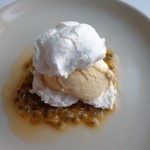 Ethereal, sweet, light as air, meringues make a lovely dessert in various guises. In France, when meringues are combined with whipped cream, ice cream or both, the dessert is called vacherin. Julia Child explains how to make a large ice cream vacherin using three large concentric rings of meringue. In this simpler version, individual meringues filled with vanilla ice cream and whipped cream are set on a coulis, or sauce, of lightly sweetened passion fruit. I first tasted this dessert at Spring, the Paris restaurant of Daniel Rose. His creation was so heavenly that I had to try to replicate it at home.
Ethereal, sweet, light as air, meringues make a lovely dessert in various guises. In France, when meringues are combined with whipped cream, ice cream or both, the dessert is called vacherin. Julia Child explains how to make a large ice cream vacherin using three large concentric rings of meringue. In this simpler version, individual meringues filled with vanilla ice cream and whipped cream are set on a coulis, or sauce, of lightly sweetened passion fruit. I first tasted this dessert at Spring, the Paris restaurant of Daniel Rose. His creation was so heavenly that I had to try to replicate it at home.
Vacherin aux fruits de la passion / Meringues with passion fruit and vanilla ice cream
Meringues have been served as a gourmet dessert in France for about 300 years and came into their own in the early 1800s, popularized by Antonin Carême, chef to kings, nobility, diplomats, bankers and even a tsar. Carême used meringues to garnish fabulous almond-paste constructions of Greek temples and other monuments. Early in his career, possibly with Talleyrand as his sponsor, he sold large meringues out of a pastry shop on Rue de la Paix. I know this because I’ve just finished reading Carême’s rags-to-riches story, as told by Ian Kelly in a biography called Cooking for Kings (Walker, 2003). It’s a book I would recommend highly, not just for the engaging narrative but also for the many recipes it includes. They amusingly demonstrate how much French cooking and tastes have evolved in the last two centuries — and how much simpler our recipes have become. Carême’s recipe for ‘Apple Meringue as a Hedgehog,’ for example, calls for 40 apples that must be cored, peeled, boiled in syrup, and rubbed through a sieve or stuffed. The meringue, used as a topping, is a mere afterthought.
Site news: The ‘Menus’ section of this web site has been updated, with new winter menu suggestions for every day and special occasions, and new menu pages for vegetarians and vegans. I have also expanded the ‘Your Kitchen’ section with a photo catalogue of useful cooking equipment as exemplified by the equipment in my Paris kitchen. Coming soon: The site’s first 2 how-to videos.


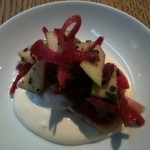
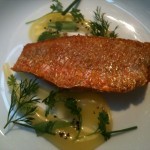
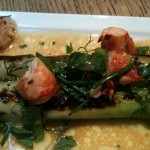
 Veal stewed gently in wine, infused with garlic, tomato and herbs, and served with a touch of cream — this supremely French invention is far from the stews of my childhood. I first tasted it in the 1970s at the home of my friend Nicole, a superior cook. She liked to have people over for dinner on short notice, and one day as we chatted in the kitchen she prepared this succulent dish in what seemed like no time. I of course demanded the recipe.
Veal stewed gently in wine, infused with garlic, tomato and herbs, and served with a touch of cream — this supremely French invention is far from the stews of my childhood. I first tasted it in the 1970s at the home of my friend Nicole, a superior cook. She liked to have people over for dinner on short notice, and one day as we chatted in the kitchen she prepared this succulent dish in what seemed like no time. I of course demanded the recipe.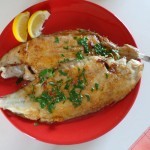

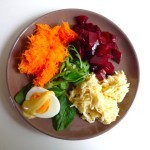 Let’s get one thing straight right from the start: there is nothing crude about crudités. This lovely fresh vegetable plate — my all-time favorite starter — is the dish I most long for whenever I’m away from France for a while. There is something quintessentially French in the way the vegetables are prettily arranged in mounds, then topped with a zesty sauce. It’s so fresh it feels like visiting a garden – and finding it on your plate.
Let’s get one thing straight right from the start: there is nothing crude about crudités. This lovely fresh vegetable plate — my all-time favorite starter — is the dish I most long for whenever I’m away from France for a while. There is something quintessentially French in the way the vegetables are prettily arranged in mounds, then topped with a zesty sauce. It’s so fresh it feels like visiting a garden – and finding it on your plate.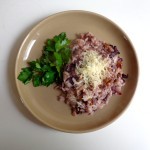 When I first tasted risotto al radicchio I was dining alone in Venice and chose it almost at random from a menu with many other dishes that were unknown to me. Bitter red salad with rice? Why not, I thought, figuring it was worth trying something new. How could I have imagined the sublime dish that was brought to my table, rich and subtle, the flavor of the radicchio leaves tamed to a hint of something wild mellowed by creamy rice, butter and parmesan cheese? But there was something more to this dish, something unusual. Intrigued, when I returned to Paris I phoned the chef, who let me in on his secret…
When I first tasted risotto al radicchio I was dining alone in Venice and chose it almost at random from a menu with many other dishes that were unknown to me. Bitter red salad with rice? Why not, I thought, figuring it was worth trying something new. How could I have imagined the sublime dish that was brought to my table, rich and subtle, the flavor of the radicchio leaves tamed to a hint of something wild mellowed by creamy rice, butter and parmesan cheese? But there was something more to this dish, something unusual. Intrigued, when I returned to Paris I phoned the chef, who let me in on his secret…

 With the end-of-year holidays approaching, this Russian-French version of gravalax makes a fine festive dish. The salmon is marinated overnight in salt and sugar — et voilà, it’s ready. Although I enjoyed this dish many times while working in Russia, where it is known simply as riba salyonnaya, or salted fish, I only started making it in Paris thanks to a Russian friend who passed along her family recipe. Served with shots of vodka or flutes of Champagne, it will get your holiday meals off to a spectacular start.
With the end-of-year holidays approaching, this Russian-French version of gravalax makes a fine festive dish. The salmon is marinated overnight in salt and sugar — et voilà, it’s ready. Although I enjoyed this dish many times while working in Russia, where it is known simply as riba salyonnaya, or salted fish, I only started making it in Paris thanks to a Russian friend who passed along her family recipe. Served with shots of vodka or flutes of Champagne, it will get your holiday meals off to a spectacular start.

